Dhaka to the Rajshahi Division Thur 20 May to Thur 17 June 2010
We finally got away from Dhaka by early afternoon and in a few hours we had reached Jamuna Bridge which crosses the Bangabandhu River. This striking structure features on the 100 taka note and we had been keen to see it. As we drew up to the toll booth the sky was darkening ominously. Thus - not wanting to drive in the darkness /wet we decided to try and stay this side of the bridge for the night and cross it in the morning. We had just passed the appropriately named Jamuna Resort nearby and so we doubled back and asked them if we could camp there the night. Unfortunately they wouldn't let us and at 1,000 BDT a night their rooms were beyond our budget. We'd only been in the office 5 minutes ascertaining this but when we came out we realized that we'd locked the car keys in the car and I hadn't got my bag with the spare...whoops!! Right on time the heavens opened. We had to return to the Jamuna resort (where they were very kind and gave us tea) and various staff members helped us try and open the car using coat hangers sticks etc I guess it was a good thing in some ways but it was very hard to break into. Eventually one of the mechanics from the nearby army base (who use the same vehicles) was called and he managed to get into the car. Thanks guys. In a heavy downpour we drove back to the Elenga Resort we remembered passing 7km back. Whilst they were also a pretty posh resort they took pity on us and agreed to let us stay in one of their driver's rooms for 500 BDT - a bit steep but we had little choice as the downpour was now torrential and we really weren't keen to drive on.
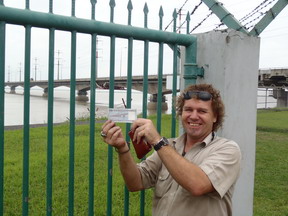
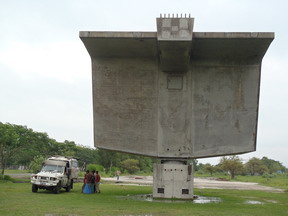
Next morning we carried on to cross the bridge. Built in the early 1990s the bridge is an impressive structure (allegedly the 92nd largest in the world - 5th largest in Asia) flanked by a heavy army guard. There was supposedly a museum about how the bridge was built which Andrew was keen to see - though we never managed to track it down but there was one of the early test span sections on display which showed the scale of the thing. We drove the 4.8km over the bridge after paying the 800 BDT toll. Actually we were pleased we'd been forewarned of this. The night before just prior to deciding that we'd leave it till the next morning we'd been quoted that to cross the bridge and had thought we were being ripped off so we'd been prepared to do battle. Research confirmed it was the genuine charge - about $15 Aus to cross a bridge - a bit rich we felt - even for a pretty impressive bridge!
It was Friday which in Islamic Bangladesh is the beginning of the weekend. Thus the roads were full of crazily overloaded buses jam packed with people from the villages who work in Dhaka returning home for a visit.
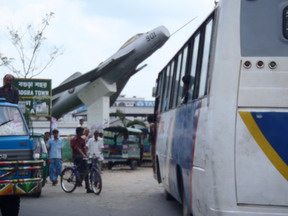
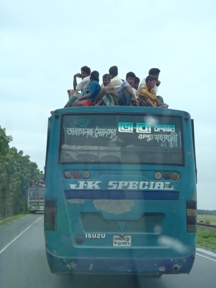
It reminded us of Cambodia the way people (and goats!) were crowded together on the roofs of buses. Apparently a ticket from Dhaka to Bogra - a town in Rajshahi and our first destination - is around 300 BDT but if you travel on the roof it falls to 70 BDT making it a lot more affordable for the average Bangladeshi traveller. The bus drivers are often completely psychotic and travel at ridiculous speeds for the weather /road conditions - it really must get pretty hair-raising up there!
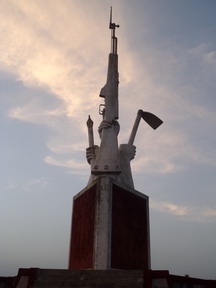
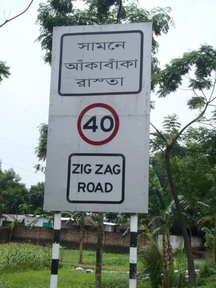
Luckily we had a safe run through to arrive at Bogra by mid afternoon. On the way we passed a few more war mementoes - captured Pakistani planes - which like the patriotic statues to the freedom fighters are everywhere. The one in our picture totally merged in with the traffic and at first glance I thought it was actually on the road which made me jump a bit! We pulled up at the Parjatan Motel in Bogra, part of a fairly up market government run chain. They agreed to let us camp for nothing which was very kind and we spent the afternoon in their restaurant sorting out our photos. Unfortunately the car park was right on a busy main road with traffic going all night so it wasn't the best night's sleep ever. There's not a lot that's remarkable in Bogra itself - it's more a starting point from which to reach other more interesting areas, so first thing we drove on 11km to Mahasthangarh. The oldest known city in Bangladesh dating back as far as the 3rd century BC there is little left of Mahasthangarh now, but nevertheless the hillocks and and foundations remaining set as they were in a serene rural landscape were pretty atmospheric. Initially a Buddhist site until the 11th century, Mahasthangarh later became Hindu and finally Muslim but most of what remains dates from the Buddhist heyday of the 8th-11th centuries.


As mentioned before it is now harvesting time for the rice crop (as well as mangoes and lychees amongst others) and this made for a lovely rural backdrop to the ruins with people of all ages working to bring in the harvest. It being Friday the area was full of weekenders and as ever we got a lot of attention as we wandered around the various stalls selling snacks and local handicrafts.
Afterwards we took in the site museum which was very interesting -containing various Hindu and Buddhist statues and some ancient necklaces which were really contemporary hippy- looking. No photos allowed. In the more comfortable winter months the site hosts a team of archeologists from France who've been working here since 1993. As they do we stayed in the very comfortable Archeological Rest House for 400 BDT a night and were very well looked after by the curator and his wife. It was a lovely peaceful place to sleep - much better than the night before! The next day we saw the 6th century Govinda Bhita Hindu Temple - directly opposite the museum. Set on the picturesque Karatuya River this is an idyllic spot which is a major site of pilgrimage for Hindus, particularly in April.
We drove on through the rural landscape to our next stop, Paharpur. In general the Bangladeshi people do not speak English nearly as much as do the Indians. This is both because having only one language they don't have the Indian's need of English as a unifier - and understandably with the history of independence focusing so strongly on the Bangla language they have a very real sense of pride in their language. It is a hard language, a lot of the sounds /pronunciations being quite alien to us. Some places - Bogra - are easy to pronounce some - Paharpur definitely came into this category - were nigh on impossible. Eventually we got it - Pa - HA- pour - but it was a struggle as of course we can't write Bengali /Bangla letters and a lot of rural people can't read (certainly not English) so we had to keep stopping to check we were on the right road. Never mind - it was a lovely drive past pretty little villages and we arrived safely…eventually!!
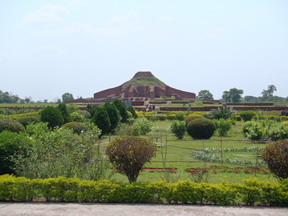

Paharpur is one of only 2 UNESCO heritage sites in the country - though there are others with applications pending. The main site of interest is the Somapuri Vihari meaning roughly "greatest monastery at the abode of the moon" an 8th century Buddhist stupa and temple complex once the largest Buddhist temple south of the Himalayas. We again stayed at the Archeological Rest House which was in an incredible setting - actually inside the complex and with a fabulous view of the main monument.
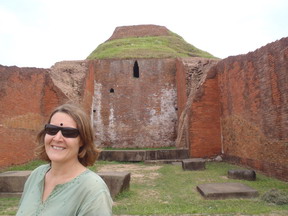
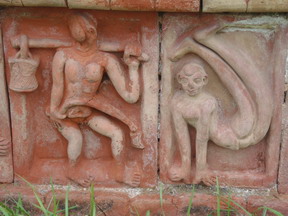
Set over 11 hectares the complex includes the central classroom area where monks were educated and 177 individual monks' cells. The site was successively occupied by Buddhists Hindus and Jains which gives a wide range of artifacts many of which are displayed in the nearby museum. The Buddhist terracotta artwork - giving way to Hindu gods in places was interesting. All in all it was a peaceful atmospheric place to relax for a while.
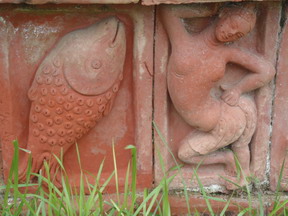
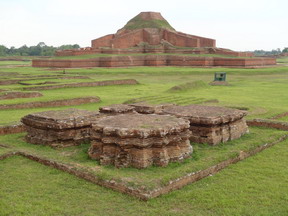
Of course we were the focus of much attention, and every time we stuck our noses outside the room we effectively went "on stage" and were surrounded by interested people. Bangladesh is no doubt the only time we will ever feel like celebrities!

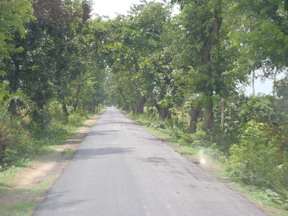
The next day there was a school trip to the site from a nearby army cadet school - out of 12 in the country it was one of 3 for girl students. We met the teachers and female officer and they very kindly invited us to join them at the silver service lunch they were having with the manager of the museums - absolutely delicious. Afterwards Andrew spoke to the girls about our trip and showed them the car and answered questions ….did we like sleeping in our bed? how many countries had we visited? did we like Bangladesh? It was lovely to meet them -thanks for the great lunch guys.
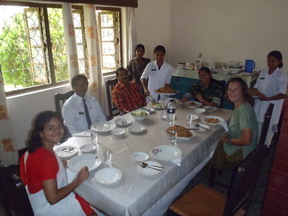

Next we drove out to Gaur or Gaud a small town right on the western border with India. This was another place no one seemed to have heard of and we got blank looks when we asked directions. Eventually we started asking for one of the major attractions - the Sona Masjid (Golden Mosque) and this worked far better! It was again a very pretty drive through winding lanes with small mud brick villages set around them and scores of laden mango trees. We pulled up once more at the Archeological Rest House and though no one spoke English we managed to get across what we needed and arranged to stay there the night. We had a large room (more of an apartment really) for 400 BDT. Very good value these places and incredibly clean - across the board at this budget level Bangladesh beats India hands down on the cleanliness stakes.
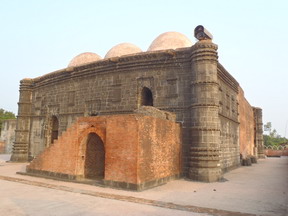

Gaud is a site of great historical importance which in the late 15th century became a very importance city under the Afghan rulers being visited by traders from all over Asia. The Chhota Sona Masjid (small golden mosque as opposed to a larger one in India) was directly opposite our guesthouse.

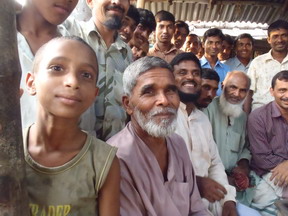
It looks more black than golden with terracotta brickwork but allegedly the domes were once golden hence the name. Now the building's most striking feature is the incredible intricate carving set in the black stone walls. Dating from 1493 it is an impressive building which remains working to this day. We stopped for a cha (milky tea) at the stall opposite and as ever were soon surrounded by well wishers. Again bizarrely we were asked a few times if we were Japanese?? I guess we all look alike!
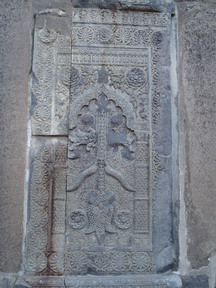
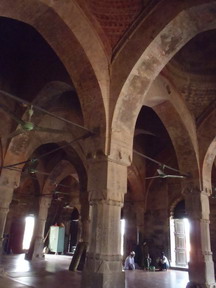
Nearby was a small complex of monuments all of which were fairly well preserved. The Shah Niamatullah Mosque - a 16th century 3 domed mosque overlooking a large pond, the mausoleum of Shah Niamatullah Wali (no ladies in the mausoleum I know that now we've been to a few!) and the 17th century Tahkhana Palace build by a Shah Shuja.
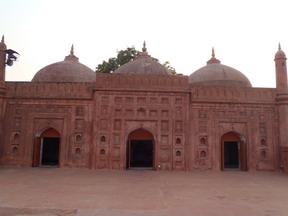
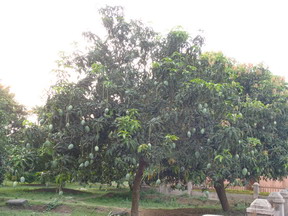
It was an attractive little complex all in red terracotta brickwork set in lovely gardens.
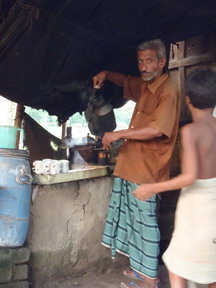
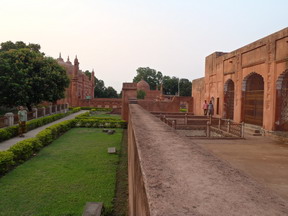
The 2 remaining sites we eventually worked out were actually in the "no man's land" between Bangladesh and India so we waited until the next morning to see them as there was a huge tail back of trucks coming in from India. There's really not much in the way of tourist information here and as mentioned little English is spoken so we often have to rely on "the kindness of strangers" to find anything!
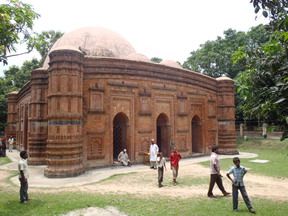
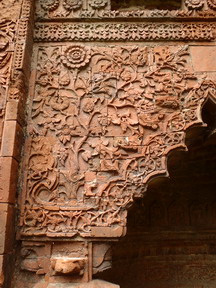
Luckily this generally materializes readily enough. On this occasion someone pointed us in the right direction and we found the lovely Khania Dighi Mosque. Dating from 1490 this mosque is set beautifully within a wood of mango trees and boasts a single dome built from an incredibly intricate design of tiny lego -sized bricks. The walls are covered all over with terracotta floral designs.


Finally we saw the nearby Darasbari Mosque dating from 1470 this mosque is in a bit more of a decrepit state with a collapsed roof but it's setting near a pond on the edge of a thriving mango orchard makes it still very atmospheric.
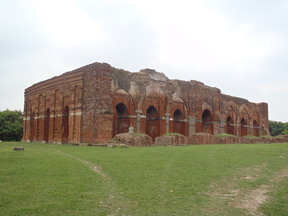

So on we drove to our next destination Rajshahi - the capital city of this division of the same name. The scenes of rural life here are very attractive - everywhere we see people drying out their rice prior to de-husking on any spare bit of road.
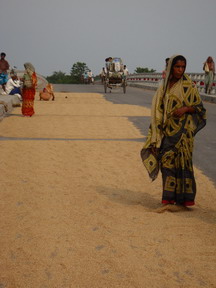
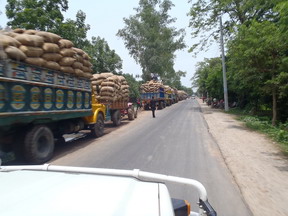
We also saw a huge tail back of trucks stacked full of rice which we later worked out were on the way into the silos for storage. Looks like it was a good crop this year. As we drove along we suddenly saw about 6 foxes/wolves? Cross the road. Far bigger than our foxes and grey they looked very healthy specimens. Similarly there is beautiful birdlife to be seen everywhere - gorgeous aquamarine Kingfishers - though we've yet to catch one on camera.


We also passed a river with some Chinese style fishing nets set up -very like in Kochi Kerala. Some of the twin carrying baskets - a pole across the shoulders with 2 baskets suspended - look like they are very Chinese influenced - no doubt from trade with China over the years. On the way we stopped briefly at a cow market where spruced up cows were being bought and sold - all very interesting everyone wanted us to picture their cows - maybe thinking it'd up their value!!!
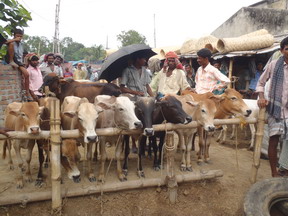
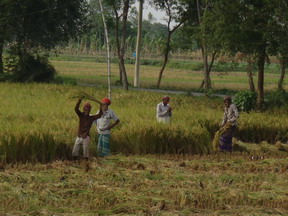
Rajshahi a busy university town set on the bank of the Padma River is a lively spirited little town - set across the River to India on the opposite bank where the River is called the Ganges. We stayed in a little hotel called Haq's Inn near the bus station which was comfortable and reasonably priced at 500 BDT a night. Rajshahi's core was the busy central markets on the way down to the riverbanks.

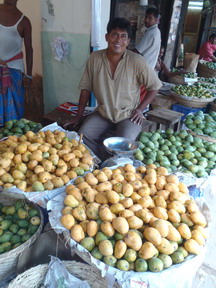
Here you can get anything from a haircut a shave (Andrew had one for 20 BDT!) fresh fruit or veggies some welding done or a live chicken - all very colourful!
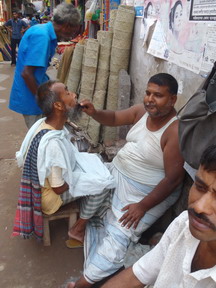
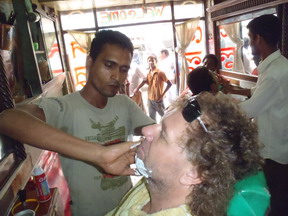
Talking of very colourful the rickshaw art was also popular here - popular themes being movie stars and the tiger - representing Bangladesh.


It was a busy carnival type atmosphere down on the river front and we walked along looking at a few historical buildings.


The Baro Kuthi high on the river bank is one remaining example of the Indigo Kuthis or factories. In the 18th century Rajshahi was a huge centre for the production of indigo - which was hugely profitable for the landowners but brought no profit to the farmers. They began trying to plant other crops - for which they were cruelly persecuted by the landowners - whole villages burnt in some cases. In 1859 a major revolt was staged. This lasted 2 years after which time production of indigo was halted for good. The kuthis were then converted to deal with silk or simply fell into ruin. Now they stand desolated but it is interesting to consider their rich history. On another historical note we also saw the Varendra Research Museum (dated 1910 supposedly the oldest in the country) which was quite good - having quite a few Buddhist/Hindu artifacts from the sites we'd seen earlier - no pictures allowed.
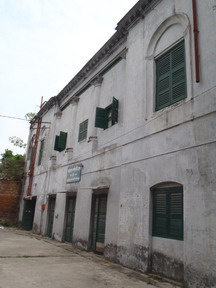
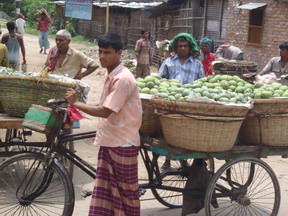
There are a few remaining raj era buildings around town from the late 19th centre when the British were here. We saw one - Rajshahi Government College dating from 1873 which is still being used to this day.

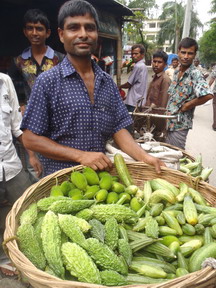
We also had the chance for a taste of a real Bangladesh specialty - sweets. Like Bengal in India Bangladesh is renowned for producing delicious sweets. I'm not really a sweet tooth but have developed a taste for some of these - particularly misti doi a really beautiful sweet curd.
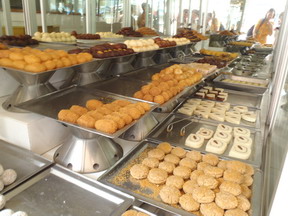

We tried to track down the Martyrs' Memorial Museum which deals with the 1971 war. This proved to be easier said than done, no one we asked seemed to have heard of it and they kept trying to direct us back to the Varendra Museum in town. Eventually a good Samaritan Jihad took us straight to the museum where it is located right within the University grounds. The trouble was we then found there was some holiday and it was shut!! Never mind we saw the mosaic memorial to the war dead and then Jihad (who is actually a student of journalism at the University) and his friends took us for a walk across the fields (all owned by the uni) to anther memorial.
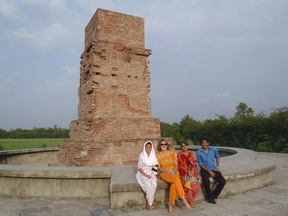
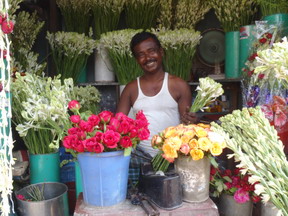
This was the site of a terrible event during the war of independence when many professors and students from the uni were taken and murdered before being thrown in mass graves. The site is now marked by a brick memorial - its rough state represents the gaps in the uni left by this barbaric act, and the red trees in flower around the monument are reminiscent of the blood of the martyrs. Thanks to Jihad and his friends we'd never have found this on our own (or known what it was!) We hope you all did well in your final exams.
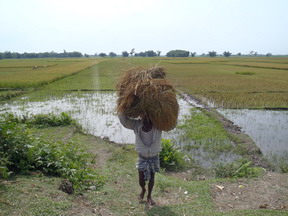
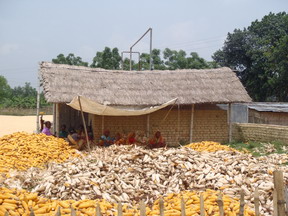
Next morning we headed on passing through more attractive countryside to our next stop the little village of Puthia. Just 23km out of Rajshahi this small rural hamlet contains many interesting monuments. The setting itself was wonderful - ducks on lily covered ponds and an old village green with a manor house(palace) in front to it- it looked a bit English -there was even a cricket game in progress! On the advice of the LP we hunted down the temples' caretaker Mr. Bishwana which was an excellent move, as he was a font of information and his tour helped bring the temples alive.


The stately old palace overlooking the green is very dilapidated now though there was a large team working hard to put this right. Built in 1895 by a Hindu ruler for his mother in law you can only see the outside (I imagine the roof is a bit too unstable to want to go inside!) but that's enough to imagine its glory days.


Just next to it was the Govinda temple. Built in 1823 this squareish "cottage loaf" shaped structure was unlike any we've seen to date in India. Devoted to Krishna it is still a working temple for the local Hindu population (more numerous here than anywhere else in the country) and is covered in elaborate terracotta panels many depicting various Hindu stories. There is a nearby pond (used as a bathing area) with a smaller very similar temple. We were impressed with this architecture - as I said something new for us - veterans of Hindu temples in India though we are!


Back on more familiar ground Mr. Bishwana got the key and opened up the imposing Shiva temple the outside of which we'd already had a look at on the way into town. Built in 1823 this contained an impressive black stone lingam - though much of the outside carvings and statues were destroyed in the 1971 conflict.

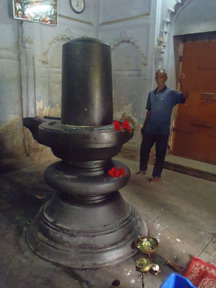
Next to this was the small Jagannath Temple a hut shaped 19th century structure. We signed the visitors book and noted they do get a slow but steady trickle of foreigner visitors here - including a few Japanese tour groups which is maybe why everyone things we're Japanese! Thanks to Mr. Bishwana for showing us around.
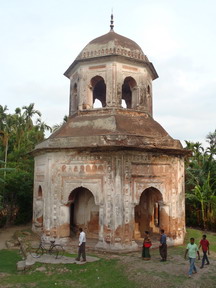
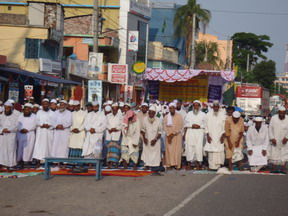
Next stop was just down the road. Natore isn't as pretty a town as Puthia but it does have a couple of good examples of Rajbaris -the Bangladeshi term for a stately home or palace, making it worth a visit. As we drove in it was prayer o'clock and a large coach trip of Muslim gentlemen had just unloaded and started to pray in the street. We got given conflicting directions so we zoomed backwards and forwards a few times and viewed them from all angles - not sure they even noticed!
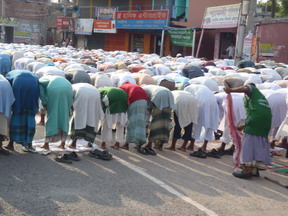
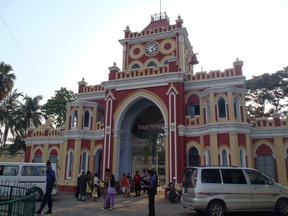
Eventually we got on the right road and headed out to Natore Rajbari. On the way we passed Uttara Gano-Ghaban - another former palace but as it's now a government building it's off limits to foreigners though we got a picture of the outside. The Natore Rajbari - dating from the mid 1700s was actually a collection of 7 or so palaces - a few of which are pretty dilapidated but still atmospheric set as they were in a lovely pond dotted gardens. There were also a couple of Hindu temples here and hearing the music playing and seeing the decorated shrines quite took us back to India.
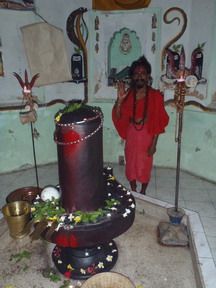
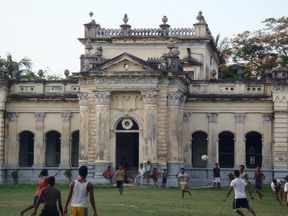
In the Shiva temple there was even a Hindu Sadhu or holy man which really took us back. As it was by now Friday evening the gardens were full of crowds of relaxing locals. There was also a hard fought soccer match going on.


World cup fever is running high here - but whereas in other Asian countries we've visited it's the UK teams (and maybe some of the bigger European teams) that get all the support here it's South America. We're not that hot on our world flags (getting better all the time!) and when we first kept seeing the blue and white and green and yellow flags everywhere next to the Bangladeshi one we at first thought they were political parties and wondered if an election was approaching. Then we worked out that they were the Argentinan and Brazilian colours - everyone here seems to go for one or the other - with a smattering of German support. They sell the flags everywhere and we tried to get English and an Aussie flag made so we could fly our colours on the car. The English one came out OK but the Aussie one (all the stars etc) was too hard for our flag maker and he threw in the towel- so the socceroos will have to do without our flag waving support!
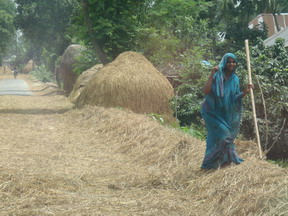
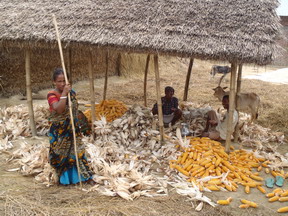
Night was now falling and we hastened on back to Bogra where we planned to stay the night as we'd been told it was about 30 minutes drive away. Wrong!! - communication error again it was about 2 hours which meant we had to drive in the dark - alongside the crazy buses with no lights which we really hadn't wanted to. Never mind we got to Bogra in one piece! After the noisy night last time at the Parjatan (kind though it was of them to let us camp) we asked at the Motel Safeway. They wouldn't let us camp - well really I don't think they quite got what we meant - but they did let us negotiate a good rate on the room it being low season so we spent the night in relative luxury. Suitably refreshed the next day (after a good sleep in) we headed on to the town of Dinajpur. We got there early evening and rocked into the representative of the now familiar Parjatan Motel chain. All was chaos there with a construction crew hard at work a big truck and cars everywhere. The manager was very nice but told us they were full up all weekend. They were apparently always full which was why the construction workers were hard at it building an extra level! Anyway very kindly when we explained our situation he said we were welcome to camp and (we were pleased to note!) the construction workers were due to stop in an hour or so. The construction workers were also camping near us so for once we had neighbours! We went and had dinner in the restaurant and whilst there we met Mr. Obaidul who was in the area visiting family. He was kind enough to invite us to stay the next night and have dinner there as his guests, so for this reason rather than moving on the next morning night we decided to return to the Parjatan the next evening after spending the day sightseeing.
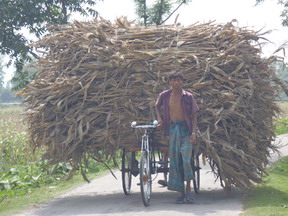
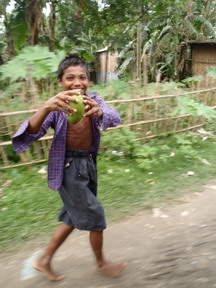
We didn't really sleep in long as we woke up to hear our "neighbours" already up and working very hard up 7am. They were very friendly and interested in us though they had very little English. These people do have it very hard. In very hot humid temperatures - you don't have to move much to get up a sweat- they carry bricks and cement around on their heads. In this heat the ladies carry 25kg bags of cement and up to a dozen bricks on their heads all day long - for about 150BDT - under $3 Aus for a long hot day!

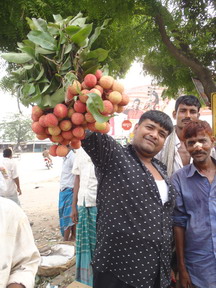
Anyway once we were up we headed first to the main reason we'd come here - the Kantanagar Temple just 26km out of town. The drive out to the temple was stunning - again workers getting in the rice and corn crops, laden fruit trees mangoes and delicious lychees - a really magical setting.
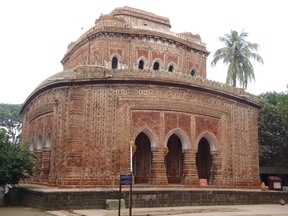
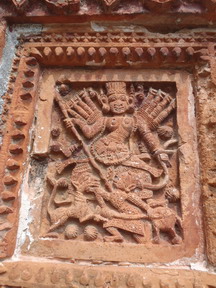
The temple dates from 1752 and was a bigger better version of the Hindu temples we saw in Puthia and amongst the most impressive we've seen. The entire outside wall is covered in intricately carved terracotta plaques depicting figures gods and flowers, some of everyday life for an aristocrat of this period some showing Hindu stories notably the part of the epic of Ramayana where the monkey god Hanuman and his army rescued Sita from (Sri) Lanka.
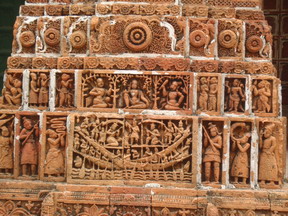
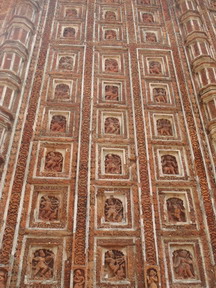
It was Saturday morning and the area was very busy -a number of Hindu families live around the temple and there were also other visitors at the small market of stalls selling both pictures of Hindu deities and snacks. At the centre of the temple was a Krishna shrine and the holy men were making offerings to it -we're not sure if this was routine for Saturday morning or if it was a special day. There was music and chanting and incense burning around the idols representing Krishna and his consort Radha (and one other there were 3 idols??) it was all very atmospheric.


We drove back to Dinajpur and saw a couple of other sites. The Dinjapur Rajbari (which again was a bit of a struggle to find) is pretty dilapidated just a few old pillars but there are a couple of temples here. One a Krishna temple - very brightly coloured - was quite interesting from the outside - though it was shut when we got there.

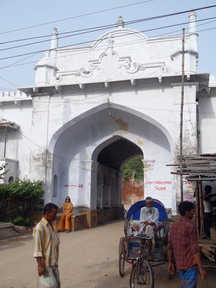
We headed back for a quick shower before returning to the Parjatan's restaurant to meet Mr. Obaidul for dinner.
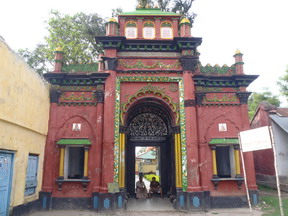
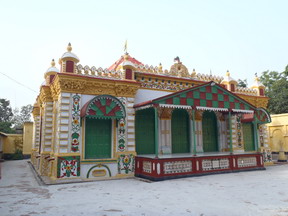
The staff had obviously been busy in our absence and had set us up a lovely table with a beautiful flower arrangement. Obaidul had ordered us a delicious meal of local specialties - some really nice fish as well as a beef and chicken dish and he had even been able to track down some cans of Hunter a Bangladeshi beer for us! This was the first beer we'd had since we crossed from India indeed we didn't know they had it here, it is quite rare and you have to have a permit so it was very kind of Obaidul to go to all that trouble for us. Special thanks go to him and to all at the Parjatan for giving us such a wonderful evening.
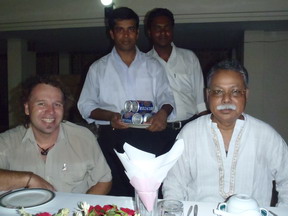
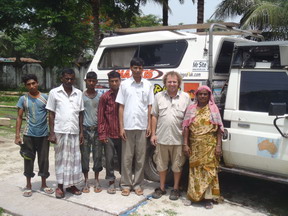
Next morning we drove north again a pretty drive, right up to the northmost tip of the country. This border into India wasn't one you could cross at but we can now say we've been as far north as we can in Bangladesh!
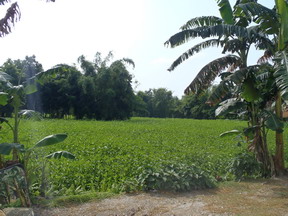

We were interested to see a crop of jute growing. This rope is a major product here and you see it sold everywhere in markets so we were interested to see it in its plant state. On the way we passed a quarry which was interesting as there are not many stones in the country and this quarry is the only one which exists. The stones - river pebbles -are broken up by hand and crushed down to use for making roads and concrete, again not easy work for the mainly female crews. That evening we arrived at the colourful town of Rangpur.

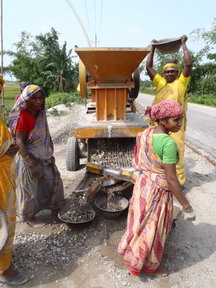
We found a good cheap hotel the Tilottama. This was hard to find down lots of tiny lanes and with no sign in English - as ever we had to ask ask ask! This was a nice quiet hotel as its business card says it has a "lonely atmosphere" which as the LP pointed out is a virtue indeed in crowded Bangladesh!!


Rangpur is a frantic mess of markets and rickshaws in the middle. They don't get many foreigners so as ever we don't get chance to be lonely despite the Tilottama's boast!! Next morning rather than have to maneuver our car around the narrow roads we hired one of the popular eco-friendly electric car (the driver a keen Argentina supporter!) and spent the day taking in a few of the local sights.
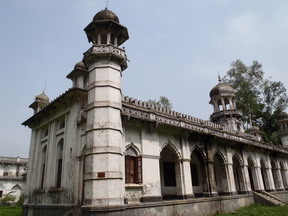
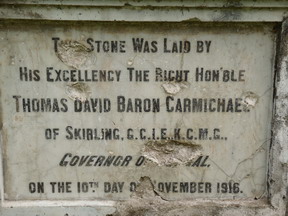
The town was a centre once for the British and some Raj era buildings remain, one we saw being the 1916 Carmichael College building. An interesting mix of British and Mughal architectural styles this imposing building is still very much a working college set in glorious parkland. We got to chat to a lot of the students which was nice. We also took in the Tajhat Palace a lovely old 19th Century Rajbari. Recently used as a high Court it now houses a museum - which seems to house the overflow of Buddhist/Hindu artifacts from Mahasthangarh and Paharpur. Again no pictures allowed inside.
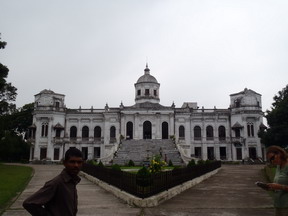

We also took in a couple of temples, a very ornate Florentine dome style Krishna temple set in a very idyllic village and a Shiva one. The later had a very friendly resident Sadhu but it is so hard with the language difficulties. He pointed to a fridge in the temple and said "the body was here for 8 months before the embassy can get it." That was a far as we got, try as we might we couldn't get to grips with the whole story ….all very intriguing!!
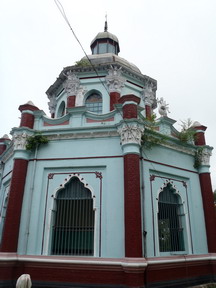
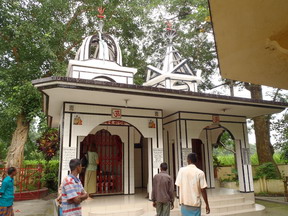
On the way back to the hotel Andrew spotted a concrete workshop and stopped to take some pictures. Unsurprisingly perhaps this doesn't often happen and the workers were very pleased to see us. It was a busy workshop with a great many staff from about 7 years old up - making concrete panels and posts. We felt we'd got a flavour of the town and that evening enjoyed a local meal of chicken curry and a delicious desert very like a really good crème caramel that evening. We'll really miss the sweets here!
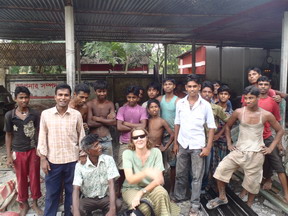
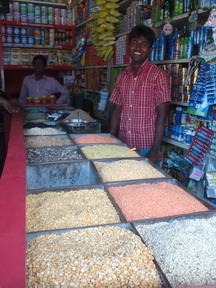
Having seen Rangpur the next day we were to be off but I woke up the next morning with a chest infection which rapidly became flu and I've been alternatively coughing sputtering moaning and sleeping (poor Andrew!) for the last 4 days.

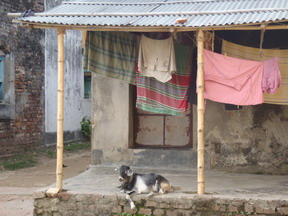
So while I wait to feel better I'm doing a bit of a web update before we head on to Dhaka where we pick up our fridge part (thanks to Engel for sponsoring us for this) and my new visa card from the Aussie Embassy as well as (fingers crossed) our Bangladeshi visa extensions. The authorities know what we're doing but we do get a bit nervous to be travelling around without a current visa so we'll be really pleased to get the new stamps in situ! Re: my visa credit card we had to get this as my card was "skimmed" and used for a 30,000 rupee transaction in India when I was already in Bangladesh. Apparently it's no drama and I'll get the money back ok -it's just another thing having to cancel the card and get a new one. There's always something!!


On the way though to Dhaka we plan first to stop at the Madhupur National Park where we hope to see some capped langur monkeys spotted deer and birdlife - sadly the tigers which once roamed here are now long gone!
Update: Sun 6 June - Thur 17 June 2010
Finally leaving Rangpur we drove towards Madhupur NP stopping first at Tangail and particularly the District Forestry Office. This office allegedly dealt with the permits etc needed for the park. Our LP has been pretty good to date but it really fell over here- first the office was in a completely different place than indicated. No signs in English and little English spoken so it took us a few hours of driving around to track it down. Once we got there we were greeted with interest (and given tea as ever!) but they clearly had no idea what to do with us. The LP indicated that the park had 2 accommodation options - one at a Catholic Missionary and one at the Forest Rest house. Supposedly this office dealt with the later but they didn't seem to know it! We rang the Father at the Missionary and he said he couldn't help us. They supplied us with the name and number of the local district forestry officer in Madhupur so we decided to head out that way and sort something out when we got there. We were assured there'd be plenty of camping areas so off we went, leaving Tangail which was getting a bit close to the sprawl of Dhaka and escaping into the scenic countryside again.

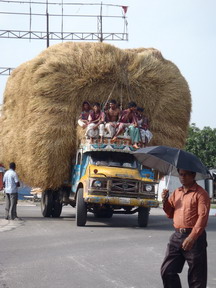
We had read that this year had seen bumper crops of both mangoes and jackfruit and we certainly saw lots of evidence of that! It was starting to get dark as we hit the area near the park which is when we hit a police road block. Through graphic sign language they told Andrew that we shouldn't go any further that way as a body with its hands cut off had been found -nice!! At this point we tried to call the number we'd been given and the man didn't seem to understand what we wanted and hung up. The police kept telling us to call the Catholic Father - though we said we already had and anyway by this point the Father wasn't answering his phone. We were ushered to a local village and a good Samaritan helped us find a meal whilst they decided what to do with us. By the time we'd finished eating a man turned up on a bike to take us to the Forest Rest house. It was all a bit bizarre he didn't seem to have any recollection of speaking to Andrew - but he was on the same number we rang earlier. Anyway he took us to the Forest Guesthouse (which we'd never have found alone) and we camped within their compound - where we managed to set up and have a quick shower before the heavens opened.

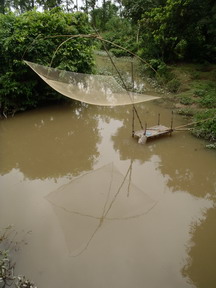
Next morning we awoke to find ourselves in what felt like the deepest darkest jungle though we were outside the perimeters of the park. As you need a guide to enter the forest we thought we'd have been inundated with offers but no one came near us - well the usual gawkers but no one else. There really is no tourist infrastructure in Bangladesh. This of course can be part of the attraction - the few posters they do have use the catchphrase "Bangladesh - get there before the tourists do!" and after the hassle and touts you get in other Asian countries this can be part of the charm - but it can make it tough on your own.
We had breakfast next to the truck and listened to the jungle noises and watched the butterflies and monkeys -all very nice. We were on the edge of a little village which was a home to the Mandi tribal people. There are a variety of these tribal people and the Mandi which populate this area are allegedly Tibetan in origin and have their own distinct culture. It was a lovely little village and we had a look at the fishing nets and the little shops. We then took a walk out to the nearby Pirgacha Village, on the way seeing the villagers going about their business. This is where the Mission is housed and when we saw a little weaving shop selling local goods, we noticed it was also full of wooden Christian crosses so the converters have been at work!
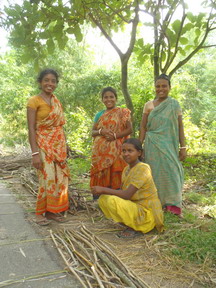
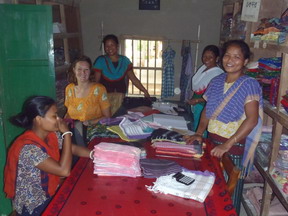
We finally managed to track down Father Homerich the priest we'd spoken to who is an American who's been here over 50 years. He was civil but a bit discouraging. Whilst the LP lists him as a place to get a meal and a cheap bed for the night - he made it clear that he doesn't do this and had written to them asking them to remove his name a few times! He also told us there had been 4 murders in the last year and the jungle was a very unsafe place for us to be.
In short we definitely started to feel we weren't that welcome here. We think some of this is a smokescreen put about by a very corrupt forestry commission which doesn't want people stumbling upon the numerous illegal logging operations which abound. Who knows - we wish someone (the District Forestry at Tangail?) had been a bit clearer re: all this to start with but I guess they wouldn't be really!! The other factor was I still had a bit of flu lingering and apparently it was a good 5 hour hike to get anywhere worth going in the jungle - and I wasn't sure I was up to it. In addition if we ran into gun toting bandits we weren't convinced having one little forestry guide with us would make us feel much better! All in all we gave it a miss - despite the LP labelling the park as a must see. We enjoyed seeing the tribal village and a bit of jungle life - but we definitely recommend only going in on a well organized walking tour - and maybe not for a few years!!

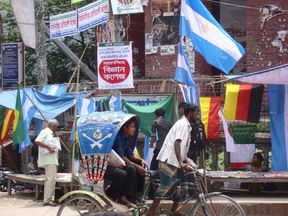
Instead we drove on 40km to the town of Mymensingh where we took a room at the Hotel Mustafiz International where I rested for a couple of days to finally kill off my flu. Set on a river there wasn't a huge amount to see here but it had an atmospheric old town and market area and was a good place to relax.
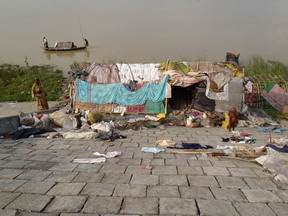
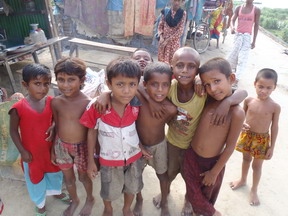
The next day when I felt better we took a walk along the river where we were quickly inundated by kids. The town has a sizeable Hindu minority - evidenced by the many shrines in the area- and most of the people living in the slum area on the river seemed to be Hindu.


They were a friendly bunch - all very keen to have their pictures taken. Though there are the odd profession beggars - in a country with no social welfare it is seen as the responsibility of the rich to help the old and sick in this way- as we were a novelty we weren't hassled for money as we would have been in India in a similar area they were just really curious about us. They had attempted to keep their living area as neat as possible but it'd be tough living there especially in the wet season in such makeshift huts. The boys were all very into the soccer (Argentina supporters almost to a man!) and followed us around showing off their soccer moves!
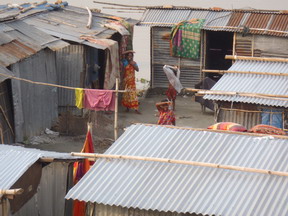

The old streets around the river were worth a wander - the usual jumble of sweet shops, sewing shops which were doing a roaring trade on the world cup flags but still no Aussie ones! We were interested to see the electricity powered carts being re-charged. For such a poor country Bangladesh really puts the West to shame by its various environmentally friendly projects - it really is a world leader in that regard. There were also a few old Raj -era British buildings, mostly operating as Government buildings now.

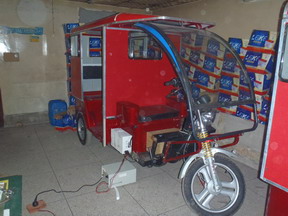
On Thursday 10 June we drove the 200km to arrive back in the bright lights big city of Dhaka where we've now been for a week. It's been interesting being back here - we're lucky we've got our comfortable homestay (complete with TV and a/c) to slot back into and we've enjoyed pigging out in all our favourite restaurants - but we have to say the extent of the poverty here -and the squalor in which some people have to live - is pretty upsetting.
We saw a pretty little girl the other day begging - and both her hands were missing - no doubt lost in an accident in some workshop which habitually employ child labour in unsafe conditions. She'll probably know on other life than begging and it seems so tragic - you feel so helpless that there's very little you can do to help. Contrasted with this we see a lot of good in the city too - and as "honoured guests" we are treated so well it becomes embarrassing. We stopped off at "Bookworm" a book shop we kept driving past to replace our lost map (we had replaced it but with a 2nd rate one - you can only buy the proper ones in Dhaka) and the charming proprietor gifted me a book by an Australian/Bangladesh author Abid Khan. Called "Seasonal Adjustments" it's the story of being a migrant and dealing with the 2 very different worlds of Bangladesh and Australia and I really enjoyed it - actually I related to a lot of the stuff about the dispossession of being a first generation migrant myself - though not as extreme between England and Australia. Anyway thanks so much for that to all at Bookworm.
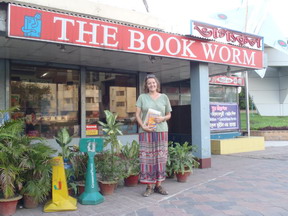
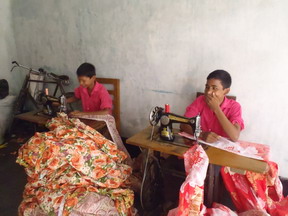
So all in all we've had a busy week - sorting out that our visa extensions are "on track" which hopefully they are- and getting a bit of car maintenance done. Our a/c needs re-gassing and the part has arrived (thanks Engel!) so we can get the fridge working again - this has been the worst part of the trip with high humidity and soaring temperatures to have been without a fridge or a/c so we can't wait to get them working again! Once this is all sorted - the next day or so fingers crossed - we'll be heading off to our next destination the scenic Sylhet Division, home to some of the world's most low lying tea plantations.
